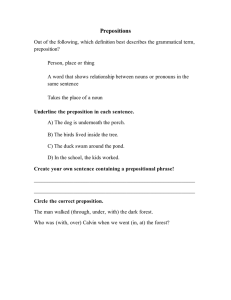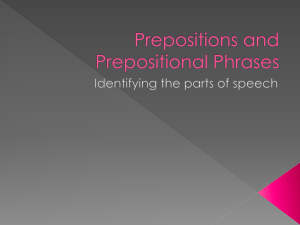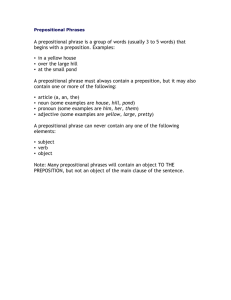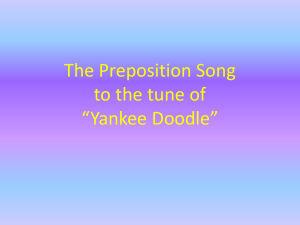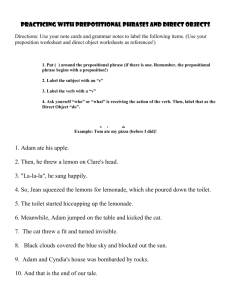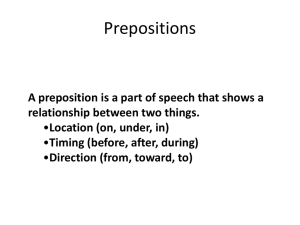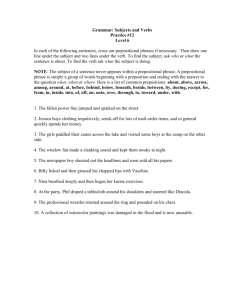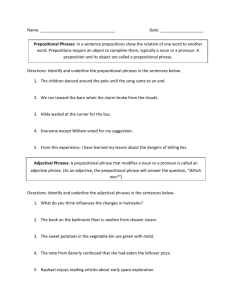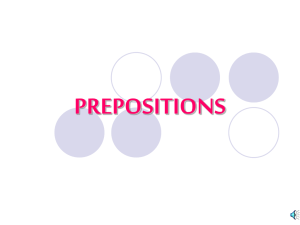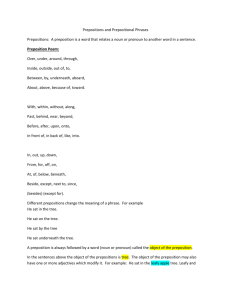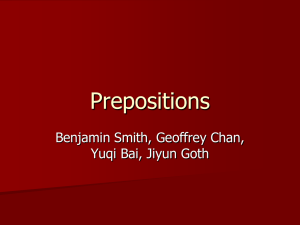Topic 4 in Grammar Jigsaw- Pronouns and Prepositions
advertisement
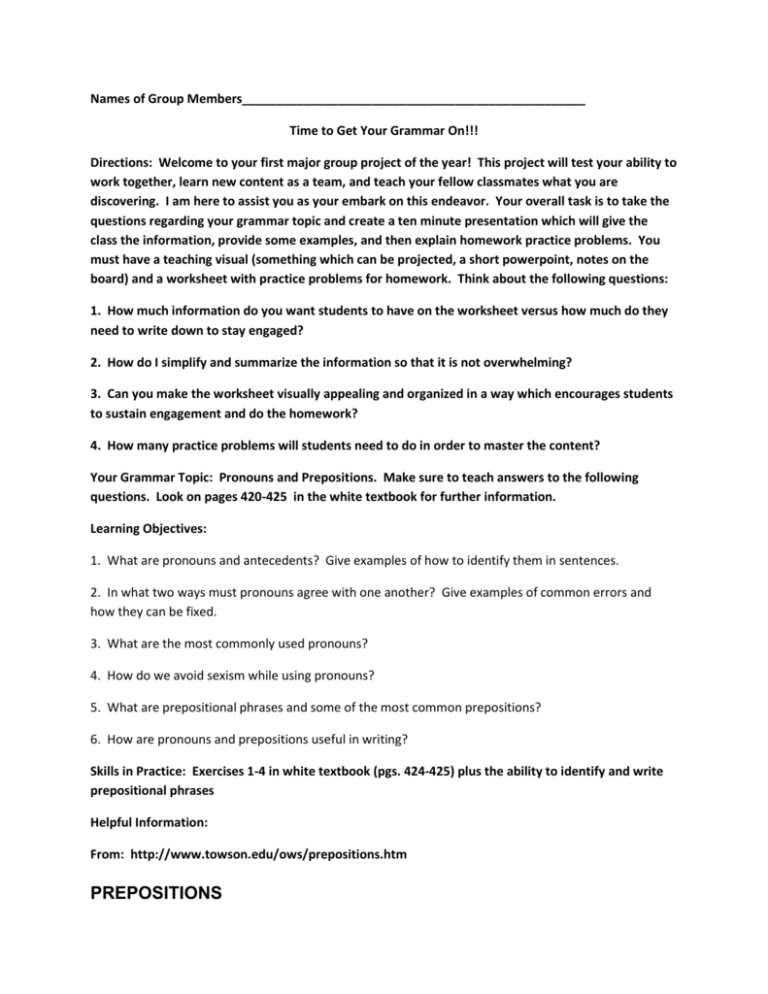
Names of Group Members__________________________________________________ Time to Get Your Grammar On!!! Directions: Welcome to your first major group project of the year! This project will test your ability to work together, learn new content as a team, and teach your fellow classmates what you are discovering. I am here to assist you as your embark on this endeavor. Your overall task is to take the questions regarding your grammar topic and create a ten minute presentation which will give the class the information, provide some examples, and then explain homework practice problems. You must have a teaching visual (something which can be projected, a short powerpoint, notes on the board) and a worksheet with practice problems for homework. Think about the following questions: 1. How much information do you want students to have on the worksheet versus how much do they need to write down to stay engaged? 2. How do I simplify and summarize the information so that it is not overwhelming? 3. Can you make the worksheet visually appealing and organized in a way which encourages students to sustain engagement and do the homework? 4. How many practice problems will students need to do in order to master the content? Your Grammar Topic: Pronouns and Prepositions. Make sure to teach answers to the following questions. Look on pages 420-425 in the white textbook for further information. Learning Objectives: 1. What are pronouns and antecedents? Give examples of how to identify them in sentences. 2. In what two ways must pronouns agree with one another? Give examples of common errors and how they can be fixed. 3. What are the most commonly used pronouns? 4. How do we avoid sexism while using pronouns? 5. What are prepositional phrases and some of the most common prepositions? 6. How are pronouns and prepositions useful in writing? Skills in Practice: Exercises 1-4 in white textbook (pgs. 424-425) plus the ability to identify and write prepositional phrases Helpful Information: From: http://www.towson.edu/ows/prepositions.htm PREPOSITIONS Prepositions are words which begin prepositional phrases. A prepositional phrase is a group of words containing a preposition, a noun or pronoun object of the preposition, and any modifiers of the object. A preposition sits in front of (is “pre-positioned” before) its object. The following words are the most commonly used prepositions: about above across after against along among around at because of before behind below beneath beside(s) between beyond but by concerning despite down during except excepting for from in in front of inside in spite of instead of into like near of off on onto out outside over past regarding since through throughout to toward under underneath until up upon up to with within without with regard to with respect to It is useful to locate prepositional phrases in sentences since any noun or pronoun within the prepositional phrase must be the preposition’s object and, therefore, cannot be misidentified as a verb’s direct object. To the store is a prepositional phrase. Store is the object of the preposition to, not the direct object of the verb drove. Car is the direct object of the verb drove. To the grocery store is a prepositional phrase. NOTE: A word that looks like a preposition but is actually part of a verb is called a particle. Held up is a verb meaning “to rob.” Therefore, up is not a preposition, and bank is not the object of a preposition. Instead, bank is the direct object of the verb held up.
